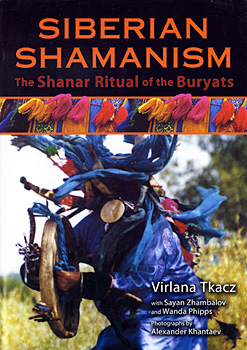
BACK COVER #
Near the radiant blue waters of Lake Baikal, in the lands where Mongolia, Siberia, and China meet, live the Buryats, an indigenous people little known to the Western world. After seventy years of religious persecution by the Soviet government, they can now pursue their traditional spiritual practices, a unique blend of Tibetan Buddhism and shamanism. There are two distinct shamanic paths in the Buryat tradition: Black shamanism, which draws power from the earth, and White shamanism, which draws power from the sky. In the Buryat Aga region, Black and White shamans conduct rituals together, for the Buryats believe that they are the children of the Swan Mother, descendants of heaven who can unite both sides in harmony.Providing an intimate account of one of the Buryats' most important shamanic rituals, this book documents a complete Shanar, the ceremony in which a new shaman first contacts his ancestral spirits and receives his power. Through dozens of full-color photographs, the authors detail the preparations of the sacred grounds, ritual objects, and colorful costumes, including the orgay, or shaman's horns, and vividly illustrate the dynamic motions of the shamans as the spirits enter them. Readers experience the intensity of ancient ritual as the initiate struggles through the rites, encountering unexpected resistance from the spirit world, and the elder shamans uncover ancient grievances that must be addressed before the Shanar can be completed successfully.
Interwoven with beautiful translations of Buryat ceremonial songs and chants, this unprecedented view of one of the world's oldest shamanic traditions allows readers to witness extraordinary forces at work in a ritual that culminates in a cleansing blessing from the heavens themselves.
BLURBS #
"...we see that shamans are ordinary people with extraordinary perception of the world. The same can be said for the book itself. ... This most certainly is no ordinary book. It is unique, in some respects more experience than narrative, a place where form and content merge, where the story becomes the message and the message is the reason for telling the story."-- John Perkins author of the New York Times Bestseller Confessions of an Economic Hit Man


